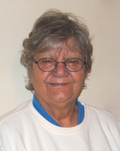
I was happy in my retirement and living on the old-age pension with my husband when I had a call in early 2009 from Curtin University requesting a meeting to discuss cultural safety in Aboriginal health. You can imagine my surprise! Here I was, a 70-year-old retiree, content in the knowledge that I had worked and studied my way up from being a housewife and mother to being a respected Doctor of Philosophy, writer, and promoter of Aboriginal issues through my writing. I was full of curiosity to know the reason for this out-of-the-blue telephone call.
The cultural safety for indigenous health movement began in New Zealand during the 1980s when a Maori student nurse, Irihapeti Ramsden, queried hospital policy on standard nursing practices by saying “You people talk about legal safety, ethical safety, and safety in clinical practices and a safe knowledge base, but what of cultural safety?”1 Clearly, cultural safety was not on the nursing agenda. Irihapeti Ramsden instigated the cultural safety movement in New Zealand. Although the Treaty of Waitangi recognised the Maori as being the first people of their country, Maori nurses knew that the Treaty was not being honoured in the nursing fraternity.1 Maori nurses and patients were being isolated from mainstream nursing practices and treated as second-class citizens because of their cultural differences. Maori nurses wanted to be acknowledged and treated as equals in the workplace. The Maori nurses and patients had strong cultural ties and began to question why they should maintain nursing practices that were contrary to their own cultural beliefs and customs. Gradually the concerns of Maori nursing staff and patients in hospitals were recognised, and cultural safety is now embedded in most schools of nursing in New Zealand. The Nursing Council of New Zealand has amended its standards for registration to include safe cultural practices.1
Before the 1967 referendum,2 Aboriginal people were wards of the state governments and had no authority over their own lives. They were subject to laws and policies that enabled state governments to monitor their movements and enforce those laws if Aboriginal people dared to show initiative by making their own decisions. They were a subjugated people. However, due to the United Nations policy on indigenous rights, attitudes were slowly changing towards indigenous peoples worldwide. The Universal Declaration of Human Rights was adopted and proclaimed on 10 December 1948 at the General Assembly of the United Nations.3 All countries were to give citizenship to their indigenous people, and Australia was no exception. But the Aboriginal people of Australia did not know about the Declaration, and it was not until almost 20 years later that they were made citizens of this country. The 1967 referendum, in which Australians voted 90.77% in favour of Aboriginal people becoming citizens in their own country,2 was an important landmark for us because it meant we were no longer wards of state governments but were free citizens.
- Rosemary van den Berg1
- * Since submitting this essay, Rosemary van den Berg has resigned from her position at Curtin University because of ill health.
- 1. Ramsden IM. From facts to practice: cultural safety and nursing education in Aoteara and Te Waipounamu. In: Eckermann A, Dowd T, Chong E, et al, editors. Binan Goonj: bridging cultures in Aboriginal health. 2nd ed. Sydney: Elsevier, 2009: 164.
- 2. Bennett S. The 1967 referendum. Aust Aborig Stud 1985; (2): 26-31.
- 3. General Assembly, United Nations. Universal declaration of human rights. Geneva: United Nations, 1948.




